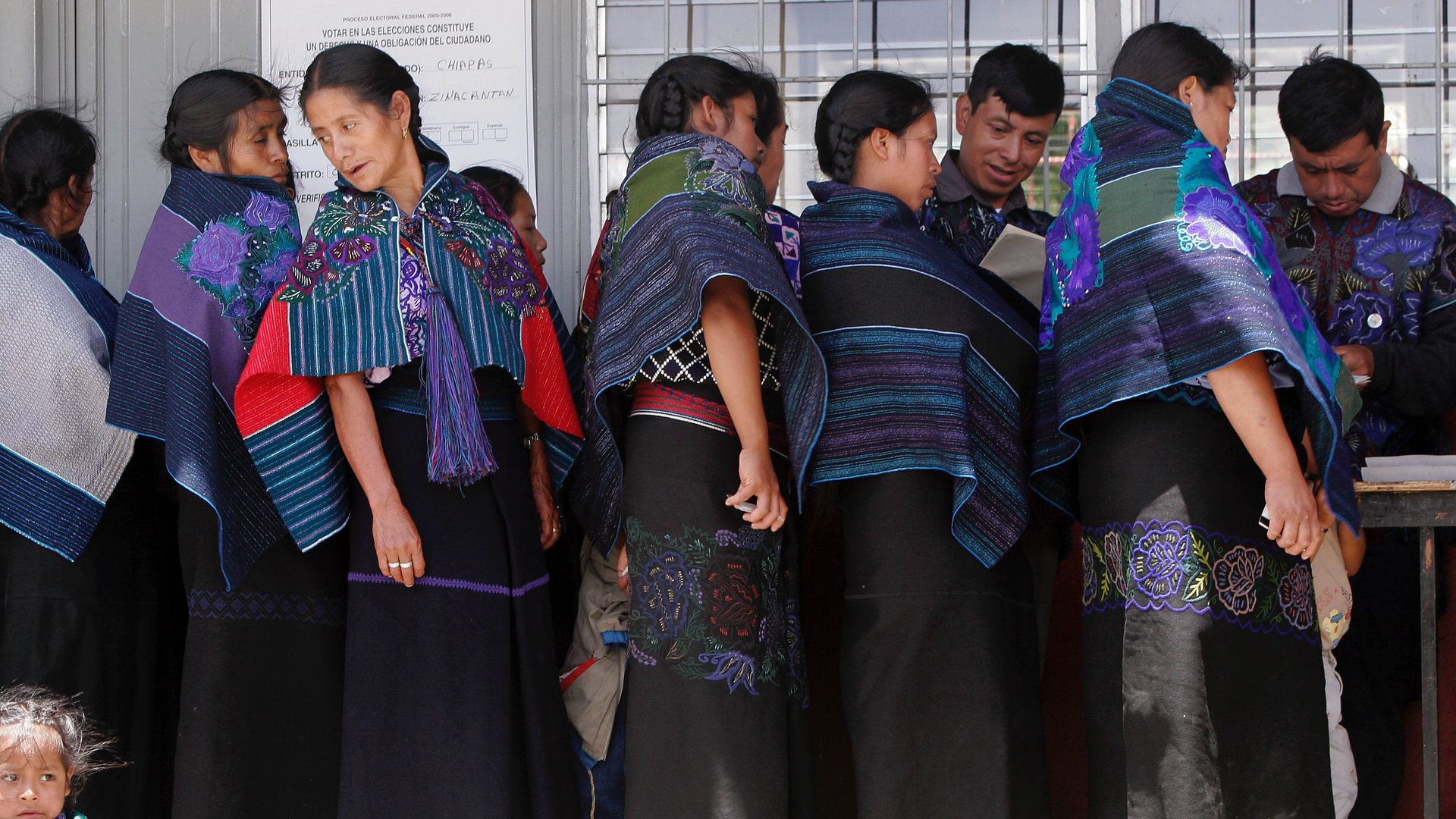Mexico is no longer turning a blind eye to local customs that bar indigenous women from voting
Mexico’s constitution has enshrined indigenous communities’ right to govern themselves according to their own “uses and customs.”


Mexico’s constitution has enshrined indigenous communities’ right to govern themselves according to their own “uses and customs.”
But in acknowledging one set of minorities, the government has essentially blocked out another one from political participation—because in many indigenous jurisdictions, women are regularly sidelined in traditional elections.
This hadn’t sat well with the women of Guevea de Humboldt, a municipality in the southern state of Oaxaca where only men were allowed to vote. The women filed a complaint with state authorities arguing they should be included in the rolls. A federal electoral court sided with them, and on Sept. 20 they participated in local elections for the first time (link in Spanish). One of them was even elected to office.
The fight in Guevea de Humboldt is part of a broader movement to empower women, who are arguably even more marginalized than indigenous communities themselves.
In 2015, Mexico amended its constitution to clarify that women’s suffrage in Mexico, achieved in 1953, supersedes indigenous government traditions. The change was pushed by Eufrosina Cruz, a Oaxaca representative in Mexico’s congress who was barred from serving as mayor of her native community. Nobody will ever again be able to use the excuse that “in the catalogue of uses and customs the word ‘woman’ doesn’t appear,” she told newspaper Milenio (Spanish) after the change was decreed.
Out of Oaxaca’s 570 municipalities, 417 are ruled by indigenous traditional governments. Elections in these rural places happen during assemblies where voters pick officials through a raise of hands or collective call. Voter lists are frequently compiled by the community itself, instead of Mexico’s federal electoral institute, which manages the rolls used in all other elections, and they don’t always include women.
Women are also barred from running for office in some places. During 2013, only eight of Oaxaca’s hundreds of self-governing communities elected a female mayor, according to official data. “Women are not visible,” says Argel Ríos, from the Oaxacan State Institute of Electoral and Citizen Participation, which is in charge of certifying election results.
Under the constitutional reform, votes that don’t include women will no longer pass muster, so the institute has been advising indigenous communities on how to go about changing the way they’ve been doing things for centuries. The agency, which originally sided with Guevea’s men in the dispute over women’s vote, also created the Gender Electoral Observatory earlier this year to promote female participation.
It’s a delicate task, given the stark division of roles in indigenous society, adds Ríos. Women stay at home while their husbands work and participate in public life. They are generally expected to support what the man of the house decides. Indeed, when Guevea’s women activists first told their elected officials—all men—that they wanted to vote, they were questioned on whether their fathers and husbands were aware of their demands, according to court documents.
Sometimes the biggest hurdle is convincing the women themselves, adds Ríos. Another challenge is making sure that if voters elected a woman, they are actually represented by one. Non-indigenous male politicians in Mexico have in the past employed a strategy dubbed “Juanitas,” which involves nominating female candidates to meet gender quotas and then having them resign shortly after they win the election so they can be substituted with men. To prevent self-government communities from copying the practice, the institute is recommending that all women running for office have a female substitute at the ready instead.